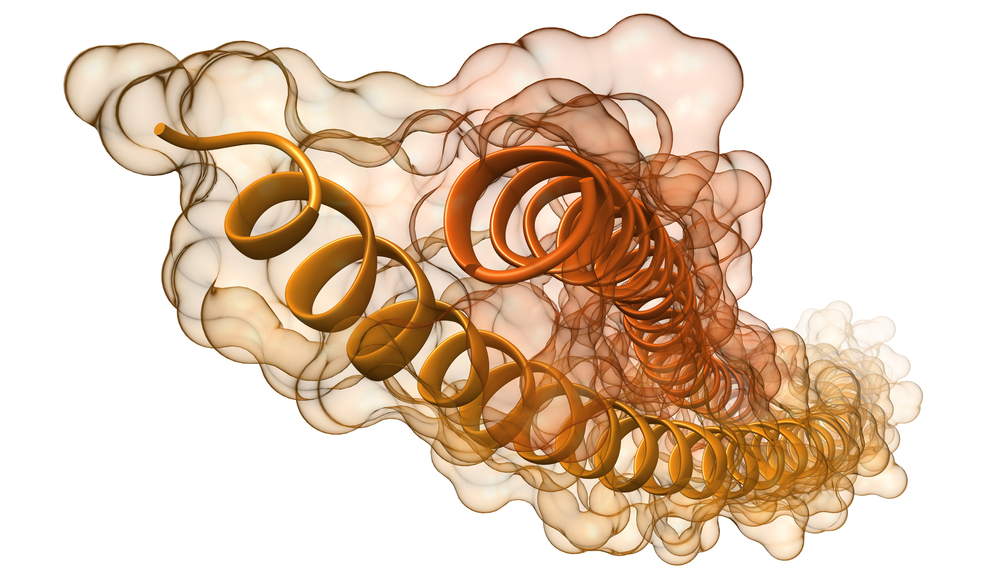

NMRが解き明かす天然変性タンパク質の秘密
“We propose that IDPs could be widely useful as cryoprotectants/lyophilization protectants for enzymes and proteins including biological therapeutics.”
Bioinformatics techniques have been developed to predict whether a protein may be intrinsically disordered based on its amino acid structure, but analytical methods are still required to confirm no tertiary structure exists. NMR is one of the best ways to identify IDPs.
In recent years, research has uncovered a class of biological proteins known as intrinsically disordered proteins (IDP) that do not adopt specific folded structures under physiological conditions. Scientists are now working to understand what IDPs are, what they do, and how we can exploit their properties.
IDPs are a large class of flexible proteins with no tertiary structure under biological conditions and very little secondary structure. IDPs contain an abundance of amino acids that promote disorder, such as hydrophilic and charged amino acids, like alanine, arginine, glycine, glutamine, serine, proline, glutamic acid, and lysine. As a result, IDPs are often hydrophilic and charged, giving them different functional properties compared with structured proteins.
NMR is a popular solution for identifying and characterizing IDPs, as it can be conducted under physiological conditions and provides information about an IDP’s residual structure, function, and dynamics.
NMR spectra of IDPs have characteristic features. The polypeptide chains of IDPs rapidly convert between multiple conformations, resulting in poor dispersion in 1H NMR spectra, with signals clustered around the 8.0-8.5 ppm region. In contrast, 1H spectra of structured proteins show much more dispersion, with chemical shifts ranging from 6.50-10.0 ppm.
Comparing the dispersion of chemical shifts in 1H spectra provides an easy way to confirm that a protein is disordered. Assigning resonances requires multidimensional NMR, with researchers typically obtaining 2D heteronuclear single quantum coherence (HSQC) spectra when investigating IDPs.
Do IDPs have cryoprotective properties?
IDPはバイオ医薬品を含む酵素やタンパク質の凍結保護剤/凍結乾燥保護剤として、広く活用され得ると考えられます。
あるタンパク質が天然変性タンパク質(IDP)かどうかをアミノ酸構造に基づき予測することを目的として、いくつかのバイオインフォマティクス手法が開発されています。しかし、三次構造が存在しないという確証が得られる分析法はまだ確立されていません。NMRは天然変性タンパク質の同定に最適な手法の一つです。
近年の研究で、生理学的条件下で立体構造をとらない生体タンパク質の一群が発見され、天然変性タンパク質(intrinsically disordered protein:IDP)と名付けられました。そして科学者は今、IDPとは何なのか、何をするのかを突き止め、その特性の活用法を見いだそうとしています。
IDPは、生体条件下で三次構造をとらず、二次構造をとることもほとんどなく、鎖が伸びた状態のタンパク質として分類されています。IDPにはそうした変性を促すアミノ酸が豊富に存在しています。例えばアラニン、アルギニン、グリシン、グルタミン、セリン、プロリン、グルタミン酸、リジンのような親水性アミノ酸や荷電アミノ酸などです。そのため、IDPも親水性で荷電していることが多く、構造をとっているタンパク質とは異なる機能特性が備わっているのです。
IDPの同定と特性解析によく用いられているソリューションの一つが、NMRです。NMRは生理学的条件下で実験でき、IDPの残基構造の情報や機能およびダイナミクスに関する情報を得られるからです。
IDPのNMRスペクトルには明らかな特徴が見られます。IDPではポリペプチド鎖の立体配座が目まぐるしく変化するため、1H NMRスペクトルではシグナルの分離が悪く、信号が8.0~8.5 ppmの領域に重なり合って観察されます。一方、構造をとっているタンパク質の1Hスペクトルの場合は、より広い範囲にシグナルが分離し、6.50~10.0 ppmの範囲に化学シフトが観測されます。
このように1Hスペクトルにおける化学シフトの分離具合を比較することで、あるタンパク質が変性しているかを容易に確認することができます。シグナルを帰属するためには多次元NMRが必要で、IDPについて知ろうとする研究者たちは通常、二次元HSQC法を用いてスペクトルを測定します。
IDPは凍結保護性を有するか?
多くのIDPには凍結による影響を抑制する性質があるのではないかと、一部の科学者は推測しています。日本のある研究グループがInternational Journal of Molecular Scienceに発表した最近の論文には、この仮説を検証しようとする試みの概要が報告されています。
研究者らはバイオインフォマティクスを利用して、ヒトゲノムデータベースを基にIDPと思われるタンパク質を特定した後、その中からランダムに6種類のIDP候補を選び、それらを発現させました。そして、発現したタンパク質が変性しているかどうかを事前に1H-15N 相関スペクトルで確認した上で、凍結および凍結乾燥に対する保護特性を検討しました。
この研究グループはIDPの候補分子のHSQCスペクトルを得るために、BrukerのAvance III 600 MHz NMRを使用しました。測定したスペクトルを解析したところ、IDPと推測された6種類のタンパク質のうち5種類については、1Hの化学シフトが7.6~8.6 ppmの範囲にまとまっており、変性タンパク質の特徴を示していました。
次に、確認された5種類のIDPの特性を調べてみると、それらのアミノ酸配列に関連性は認められないにも関わらず、いずれも凍結保護性を有することが分かりました。
ヒトゲノム配列に由来する凍結保護タンパク質は、免疫反応を引き起こさないという大きな強みがあることから、医療分野での活用には他の凍結保護タンパク質よりも適しています。
まだ同定されていないIDP、あるいは詳しく研究されていないIDPは、他にも多数存在します。IDPの様々な性質が完全に解明されるまで、NMRは今後も確実に、このような研究の中心的な役割を果たし続けるのではないでしょうか。
参考文献:
Matsuo N, et al. Discovery of Cryoprotective Activity in Human Genome-Derived Intrinsically Disordered Proteins. International Journal of Molecular Sciences, 2018. DOI: 10.3390/ijms19020401.
Reference
Matsuo N, et al. Discovery of Cryoprotective Activity in Human Genome-Derived Intrinsically Disordered Proteins. International Journal of Molecular Sciences, 2018. DOI: 10.3390/ijms19020401.

